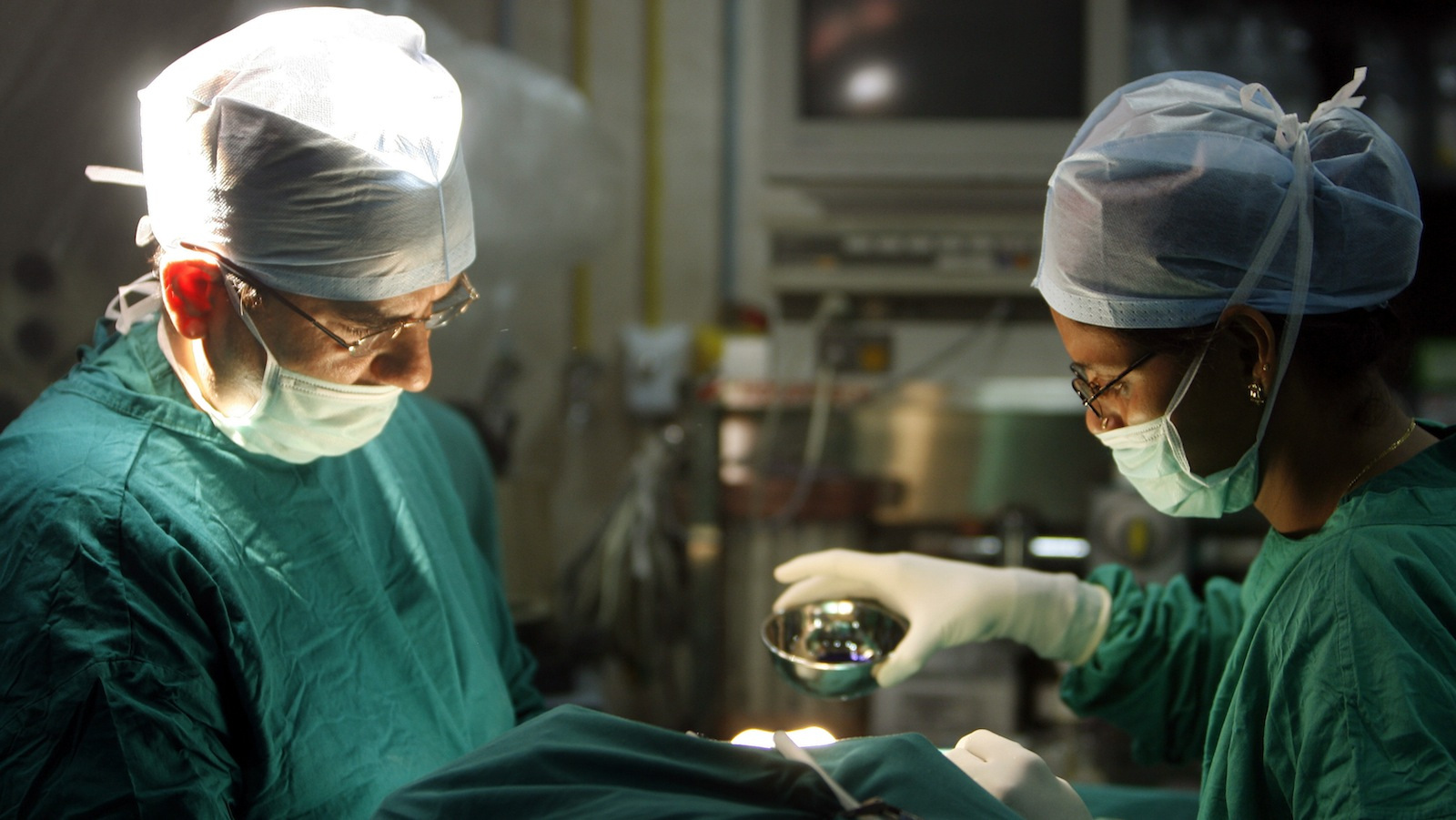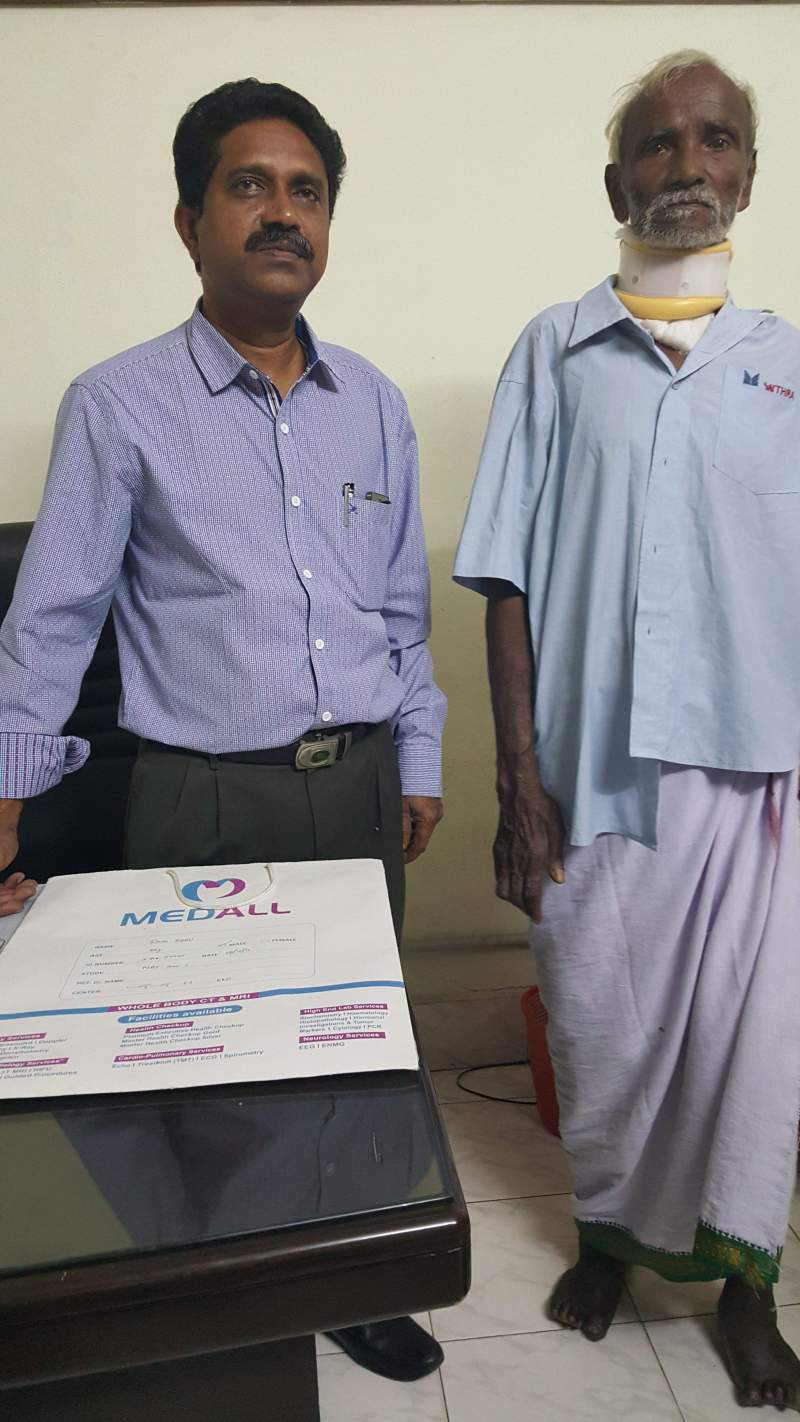
Doctors have done India proud this year with rare feats-like these
Indian doctors work day in and day out to treat patients, facing such challenges as poor doctor to patient ratio and sometimes, equally poor infrastructure. It is not to undermine the efforts of these doctors that we are upholding the rarest feats of doctors.
As opposed to the accomplishments of everyday heroes, these achievements show the immense potential that the Indian medical fraternity owns. Something which we can all be proud of.
Needless to say, the list is far from comprehensive.
9 hour long surgery that saved a 2 month old who suffered multiple heart attacks(February)
Baby Aditi had a rare abnormality that caused her to suffer multiple heart attacks though she was just two months old. But a team of doctors in a Mumbai hospital performed a surgery that lasted 9 hours thanks to which the baby is now doing well.
It was while conducting an echocardiography on the infant that the doctors found an abnormal artery origin which was turning away majority of blood supply from the heart and also reversed the blood flow away from the heart.
Since she was born with this defect the baby suffered repeated heart attacks. The lesion was caused by an abnormal origin of left coronary artery. It’s said that such children usually die of heart failure before they reach their first birthday. The defect is extremely rare(just one in 3,00,000 deliveries)
“In the case of a normal baby, pressures in the lungs normalise seven days after birth… but in Aditi’s case the lesion diverted the pink (pure) blood, thereby severely reducing the supply of pure blood to the heart. It resulted in frequent and silent heart attacks that damaged the heart muscles,” according to Dr Shivaprakash, the Chief Surgeon at the hospital.
Aditi’s condition stabilized five days after the surgery. She is expected to gain a normal heart function over the next few months and according to the doctors, should be able to lead a normal life.
Replacing a heart valve without open heart surgery(April)
In what is considered as rare, and first of its kind in Rajastan, doctors replaced a heart valve in a 70 year old woman without resorting to open heart surgery. The patient was suffering from severe Aortic Stenosis.
The revolutionary procedure was performed by a team of doctors led by Dr Ravindra Singh Rao and Dr Samin Sharma of Eternal Heart Care Hospital. The procedure was performed through an artery in the leg.
As per Dr Rao, “For this patient, we went from her left leg artery and crossed the tight valve with a wire. Then the valve was advanced over the wire and positioned at the right place under fluoroscopy and echo guidance. The procedure was performed without a single stitch and involved minimal morbidity.”
The patient was able to walk in the evening, it’s been said.
The transcatheter aortic valve implantation(TAVI) procedure could be performed in the cath lab without opening the patient’s chest. In India the preocedure is done only with the prior approval of the DCGI.
The doctors’ feat gained appreciation from the Chief Minister, Vasundhara Raje who said it would give a boost to medical tourism.
Iraqi woman with one of the rarest genetic disorders gets a new lease of life(May)
A surgery performed at a hospital in NCR has given a 27 year old Iraqi woman a new lease in life. The woman was suffering from a rare genetic disorder that resulted in duplication of multiple vital organs like urinary bladder, ureter and vagina.
The disorder-called caudal duplication syndrome is so rare that only about 30 cases have been reported globally so far.
“She had two urinary bladders with two urethras, two uterus, two vaginas and two small and large intestines. One of the colons in her body was opening in between the vaginas. This opening also resulted in fecal incontinence, causing great physical discomfort and repeated infections,” said Dr Sanjay Gogoi, director, urology and renal transplant at Fortis Memorial Research Institute (FMRI), Gurgaon.
As per the doctor, the woman who is a management student in Baghdad had adopted a strict lifestyle so that she could pursue her dreams. Since she didn’t have control over her second colon, she had to wear a diaper at all times and also eat sparingly.
The women underwent a seven hour long reconstructive surgery and has now made a full recovery without complications.
“It was a difficult case, where genitoplasty and colocolonic anastomosis were performed on the woman through the seven-hour-long surgery. We were able to establish a connection between the two large intestines and completely remove the ‘vaginal-colon’. External and internal genitalia were reconstructed and her reproductive organs were saved, even enabling her to bear children in future,” the doctor said.
Reconstructing nose on the forehead and implanting it where it belongs(July)
Indore doctors performed a rare plastic surgery by which they reconstructed the nose on the forehead of a 12 year old boy before implanting it at the place on his face where it belongs.
The boy’s nose had disappeared when he was a month old because of the side effect of an injection. According to Dr Ashwini Dash, who led the team of doctors who performed the surgery, the rare surgery was performed in four phases that took an year to finish.
“A normal rhinoplasty was not possible on Arun’s face as his nose had almost disappeared. Therefore, we decided to perform a special plastic surgery on him, which is medically called as ‘pre-fabricated forehead flap rhinoplasty’,” said the surgeon.
In the first phase of the surgery, a special silicon tissue expander was put on the boy’s forehead. And a special chemical was added so that the tissues on the forehead could expand.
In the second phase, some cartilage was taken out from the lower part of the boy’s chest and an artificial nose was reconstructed from it which was then placed on the forehead for three months-this so that the blood circulation could begin there and all the tissues could become active.
In the third phase, the nose grown on the boy’s forehead was removed and implanted at the original place on the face where it was joined with every minute vein so that normal blood circulation is possible.
In the surgery’s fourth phase, the place on the boy’s forehead where the nose was grown was normalized.
In the aftermath of the surgery, the boy, Arun Patel hailing from Ujjain had this to say, “I did not have the courage to look at myself in the mirror in the absence of the nose. I would always walk on roads with my head down. In school, the children used to be afraid of me and made fun of me. But, now after getting a new nose, I can face the people with self-confidence.”
Helping a paralyzed man walk again(October)

The doctor and the patient
A rare surgery was performed at the Kakinada Government General Hospital in Andhra Pradesh by which a paralyzed man was able to walk again.
The patient- a 60 year old man had slipped at his home which caused serious injuries to the vertebral column. The junction of 4 and 5 in the vertebra were totally dislocated. The result was that the patient’s hands and legs became paralyzed.
Once they found that the injury was of the second grade category, the doctors suggested emergency surgery.
A team of doctors guided by Dr Premjith Ray performed the “Open Reduction and Fixation with Instrumentation” method surgery. The surgery involves opening the injured part of the spinal cord on both ventral and dorsal sides and then setting the dislocated vertebrae with artificial bio-medical material.
After the surgery which took nearly three hours, the patient has now completely recovered from the injury. All his once-paralyzed limbs are working normally.
Separating parasitic twins(November)
In what’s claimed to be a first-of-its-kind surgery, doctors in Jodhpur separated parasitic twins.
In the surgery which took place in Umid Hospital, two teams of specialized doctors separated the parasitic underdeveloped body from a fully developed body of a ten-day-old male child.
To ensure that the separation was smooth and risk-free, aside from pediatric surgeon, the team of doctors also included a cardiac surgeon and anesthetist. As per Paediatric surgeon, Sunil Kothari, due to the sharing of a heart and liver, separating the parasitic body was a huge challenge.
“In such situation, we had to carry out the vascular separation to ensure that flow and supply of blood continues to the developed child and we succeeded in our objective in a single step,” said Dr. Kothari
Image credits: newindianexpress.com, qz.com